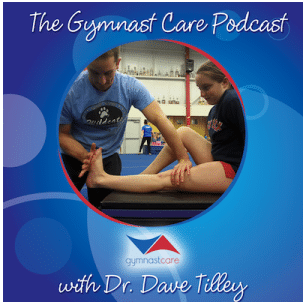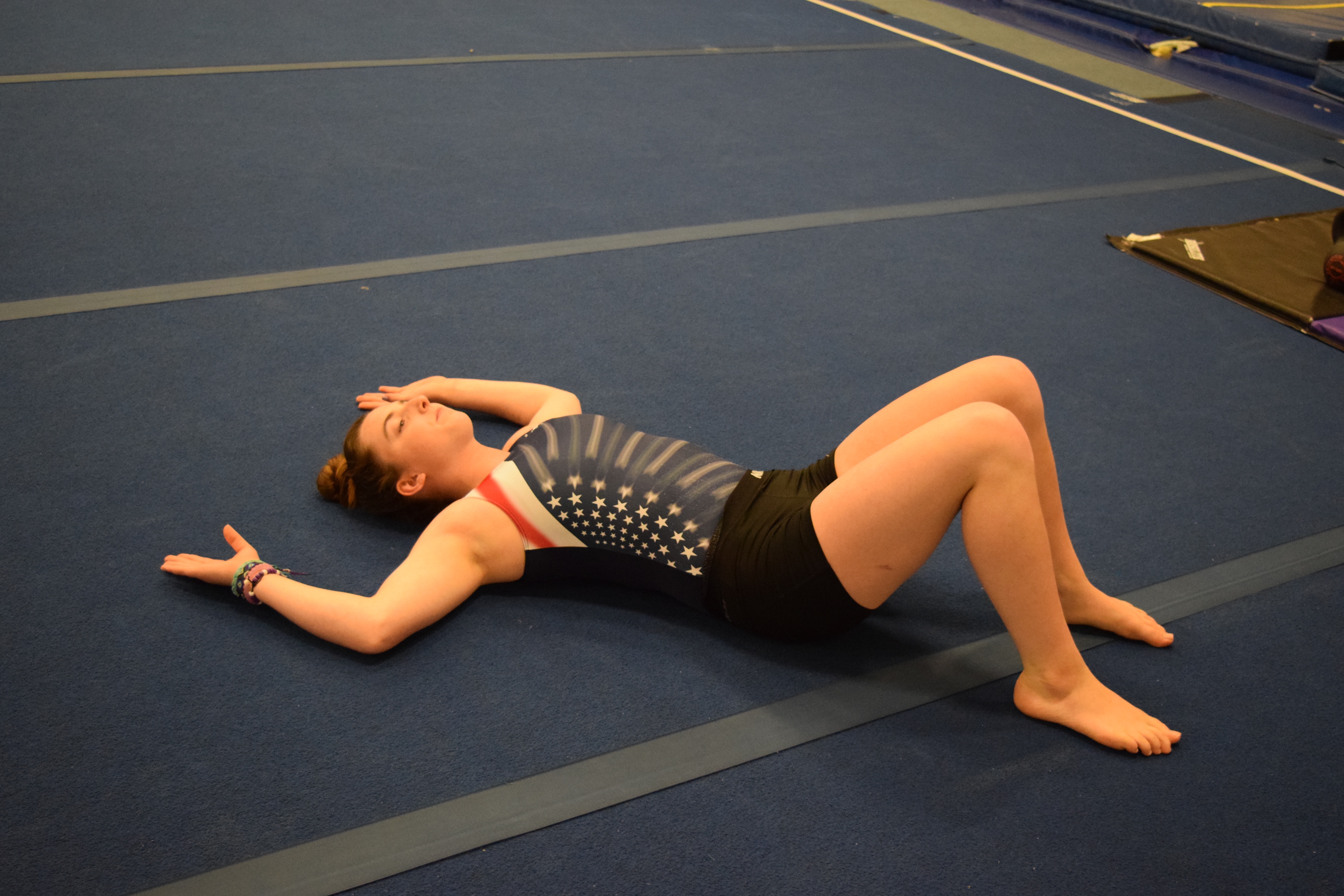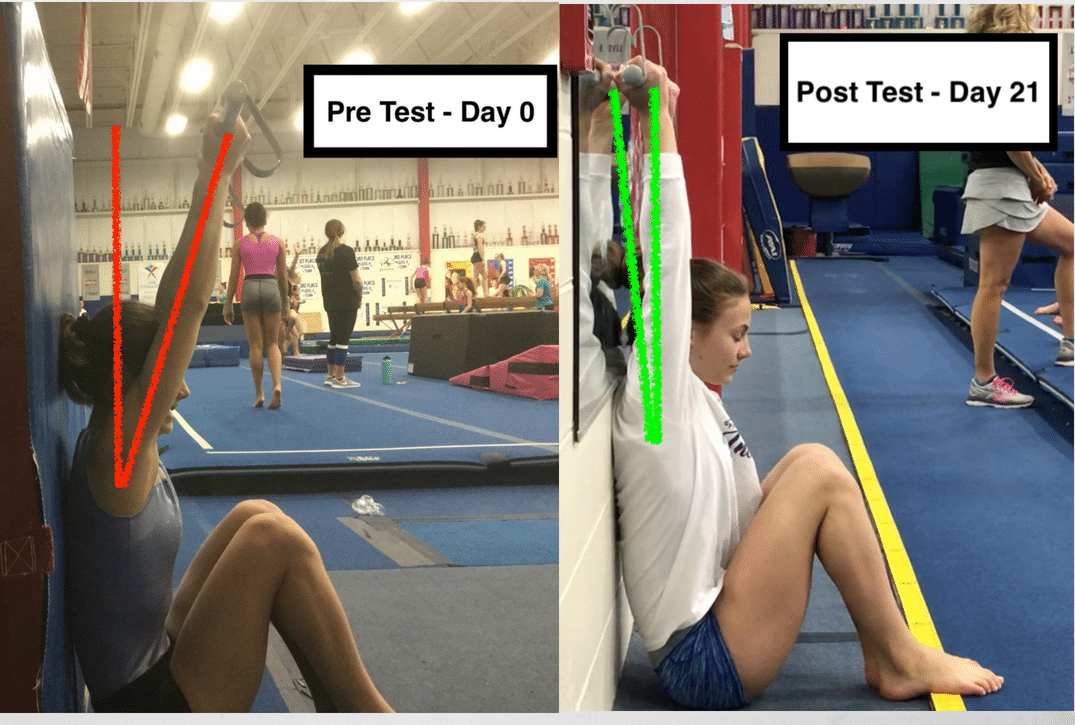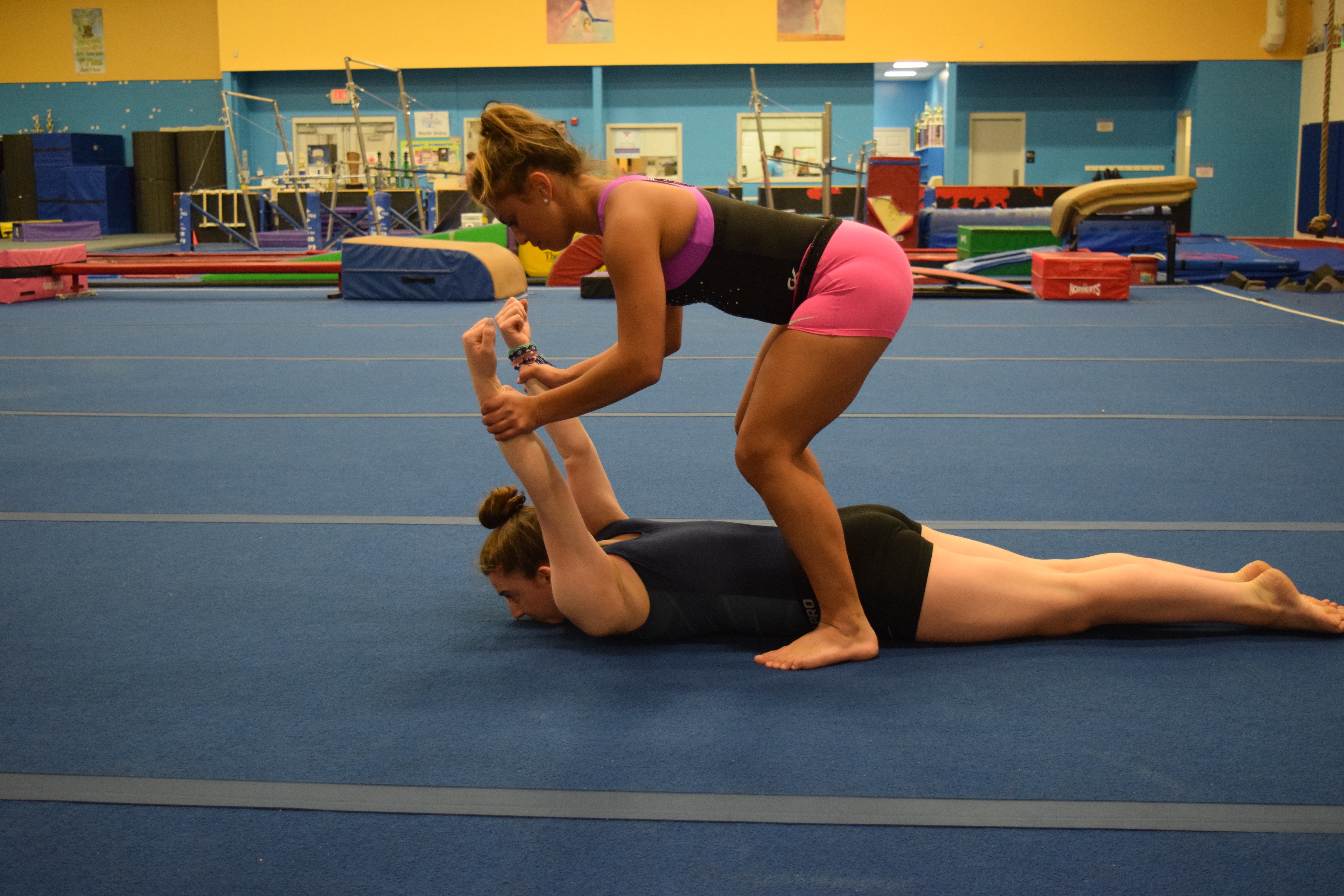Why Gymnasts Need PreHab & My 5 “Must Do” Exercises
Gymnastics is a high-impact sport that requires a combination of strength, flexibility, and control. As such, it’s important for gymnasts to engage in proper prehabilitation, or “prehab,” to reduce the risk of injury and improve performance. In this blog post, I’ll explore the principles of gymnastics prehab you can use to help gymnasts stay healthy and strong.
But first, if you are a gymnastics coach, parent, or athlete looking for my ‘best of the best’ Gymnastics PreHab exercises, I want to let you know that today we just released our brand new Gymnastics PreHab Circuits for the ankle, knee, hip, lower back, shoulder, and elbow/wrist.

These circuits are what I wish I had as a younger coach and medical provider – simple to use but highly researched circuits with the exact flexibility, strength, balance, and gymnastics-specific PreHab drills gymnasts need. After many people asked me to create these, I asked around and put together the best set of circuits I could think of to save busy gymnastics professionals time and money.
Each area of the body has 3 full circuits (A, B, and C days) that you can print out for a binder or to put on the wall at the gym or at home. Or, use the digital version to click the links of each exercise and be taken to a video of the exercise being performed. If you or an athlete are confused, check out the index where we have a detailed description walking you through how to do the exercise.
Best of all, our bundle of all 6 is 25% off this week only to celebrate the launch and give save you time and money going into gymnastics competition season!
Learn more about it here! https://shiftmovementscience.com/prehab/
Prehab is a proactive approach to injury risk reduction that focuses on taking the best available science and coaching knowledge, identifying potential risk factors based on the sport, and working to reduce the likelihood of common injuries occurring. By implementing specific exercises and drills, the hope is that gymnasts can improve their overall physical preparedness and reduce the risk of injury. In the case of gymnastics, prehab should target the areas of the body most vulnerable to strain, such as the knees, wrists, shoulders, and lower back. With this said here are 3 of my ‘must have’ PreHab areas for gymnasts based on the most common injuries I see all the time in gymnastics, and some specific exercises I use daily.
Table of Contents
1. Reducing Knee Injury Risk in Gymnasts with Leg Strength & Landing Drills
Gymnastics is a sport that requires athletes to perform very high-impact landing, such as is seen with tumbling, vaulting, and dismounts. These skills can place significant force on the knee and ankle joints, particularly in young gymnasts who are not fully developed. In order to protect their knees against these high forces, gymnasts must train their legs to be strong and learn proper landing techniques. There is great research from Tim Hewitt and various ACL research groups (find those studies here and here) that getting very strong legs, and learning to land properly, can significantly reduce the risk of traumatic knee injuries, particularly in females.
One of the key factors in protecting the knees during gymnastics is having strong leg muscles to act as dynamic stabilizers to force. The quadriceps, hamstrings, glutes, hip rotators, and calf muscles all play a role in absorbing and distributing force during landing and movement. By training these muscles to be strong, gymnasts can better handle the high forces that are placed on their knees during training and competition. For that reason, I love using exercises like single-leg squats, single-leg RDLs, hip lifts, and seated calf raises in PreHab circuits.
Proper landing technique is also essential for protecting the knees in gymnastics. This involves keeping the feet shoulder-width apart and landing on the balls of the feet first, rather than the heels, and then moving into a proper squat pattern. This allows the legs to act as shock absorbers, reducing the impact on the knees. Regular PreHab drills, using both double and single-leg landings, can teach and reinforce this.
2. Reducing Lower Back Injury Risk in Gymnasts with Shoulder Flexibility
Maintaining overhead shoulder flexibility is crucial for gymnasts in order to perform backward skills such as bridges, back walkovers, back handsprings, and arching style release moves on bars. These skills require a significant amount of shoulder mobility, which can put a strain on the lower back if the shoulders are not flexible enough. This is particularly true with young growing gymnasts, who already struggle to maintain their range of motion. As a result, gymnasts must work to maintain good shoulder flexibility in order to reduce the risk of lower back pain during these movements. PreHab is a perfect spot for this.
One way that gymnasts can maintain overhead shoulder flexibility is through regular soft tissue care, such as foam rolling and self-massage, to the lats, teres major, and pecs. These techniques help to reduce tone and tension in the muscles around the shoulders that are commonly stiff and overworked, allowing for a greater range of motion.
Consistent stretching is also an important component of maintaining overhead shoulder flexibility. There are various stretches that can help to improve flexibility in the shoulders. But, the key is to make sure you are using stretches that specifically target the muscles mentioned above, and do not place excessive strain on the joint or shoulder ligaments. That is why I love the PVC stick stretch, which uses an under-the-grip and rounded upper back to accomplish specific targetting to the lats and teres major.
3. Reducing Shoulder Injury Risk in Gymnasts with Direct Scapular Strength
Another common area that gives gymnasts problems, particularly male gymnasts, is the shoulder joint. Gymnastics forces athletes to use their arms in a similar fashion as their legs through weight bearing, while joints like the shoulder do not have the same inherent stability as the hip. For this reason, extra care must be taken to strengthen the rotator cuff and scapular.
The rotator cuff and scapular muscles play a crucial role in the stability and control of the shoulder joint during high-strain movements in gymnastics, such as strength moves on rings, swinging elements on bars, and impact-based skills on vault and beam. These muscles help to maintain proper alignment and positioning of the shoulder blade, allowing for a greater range of motion and stability during these demanding movements. They also help buffer and absorb high forces experienced during these sills.
There are various exercises that can help to strengthen the rotator cuff and scapular muscles, as outlined in fantastic research with EMG studies (see that research here and here). Some of my favorites include side-lying dumbbell external rotation, prone T’s, Prone Y’s, Prone U’s, and standing full cans.
We also want to make sure a lot of upper back and scapular strength is developed to support the shoulder. For this, I love feet with elevated horizontal rows.
By incorporating these exercises into their training, gymnasts can improve the strength and dynamic stability of their shoulder joints, reducing the risk of overuse injuries during high-strain movements.
Want The PreHab Circuits I Use Every Day?
Most people know Gymnastics PreHab is important, but the reality is that it is beyond exhausting trying to research exercises, put them into circuits, and know what you are doing actually is worth it.
So, after lots of people asked, I took the time to create brand new Gymnastics PreHab PDF circuits fo the ankle, knee, hip, lower back, shoulder, and elbow/wrist that you can use in the gym or at home. The best thing is, you can get them for 25% off this week as we celebrate their launch of them and get geared up for competition season!
Save yourself the hours of headache scrolling social media or hundreds of dollars buying PreHab courses from other sports trying to ‘make it work’. These 6 PDFS are all you need, offering 3 separate circuits (A, B, and C day) for each joint as well as in-depth explanations and video links for each exercise. Learn all about it here!

Concluding Thoughts
Whether you’re a seasoned coach working with advanced gymnasts, or an everyday parent who has a gymnast in the recreational level for fun, incorporating prehab into training routines can make a big difference in performance and overall well-being.
By taking a proactive approach to injury prevention, you’ll be better equipped to help gymnasts handle the demands of the sport and reach their goals. I hope this was helpful, and thank you for reading!
– Dave
Dr. Dave Tilley, DPT, SCS
CEO/Founder of SHIFT Movement Science
References
- Webster KE, Hewett TE. Meta-analysis of meta-analyses of anterior cruciate ligament injury reduction training programs. J Orthop Res. 2018 Oct;36(10):2696-2708. doi: 10.1002/jor.24043. Epub 2018 Jun 13. PMID: 29737024.
- Ardern CL, Ekås GR, Grindem H, et al 2018 International Olympic Committee consensus statement on prevention, diagnosis and management of paediatric anterior cruciate ligament (ACL) injuries British Journal of Sports Medicine 2018;52:422-438
- Reinold MM, Wilk KE, Fleisig GS, Zheng N, Barrentine SW, Chmielewski T, Cody RC, Jameson GG, Andrews JR. Electromyographic analysis of the rotator cuff and deltoid musculature during common shoulder external rotation exercises. J Orthop Sports Phys Ther. 2004 Jul;34(7):385-94. doi: 10.2519/jospt.2004.34.7.385. PMID: 15296366.
- Reinold MM, Macrina LC, Wilk KE, Fleisig GS, Dun S, Barrentine SW, Ellerbusch MT, Andrews JR. Electromyographic analysis of the supraspinatus and deltoid muscles during 3 common rehabilitation exercises. J Athl Train. 2007 Oct-Dec;42(4):464-9. PMID: 18174934; PMCID: PMC2140071.











